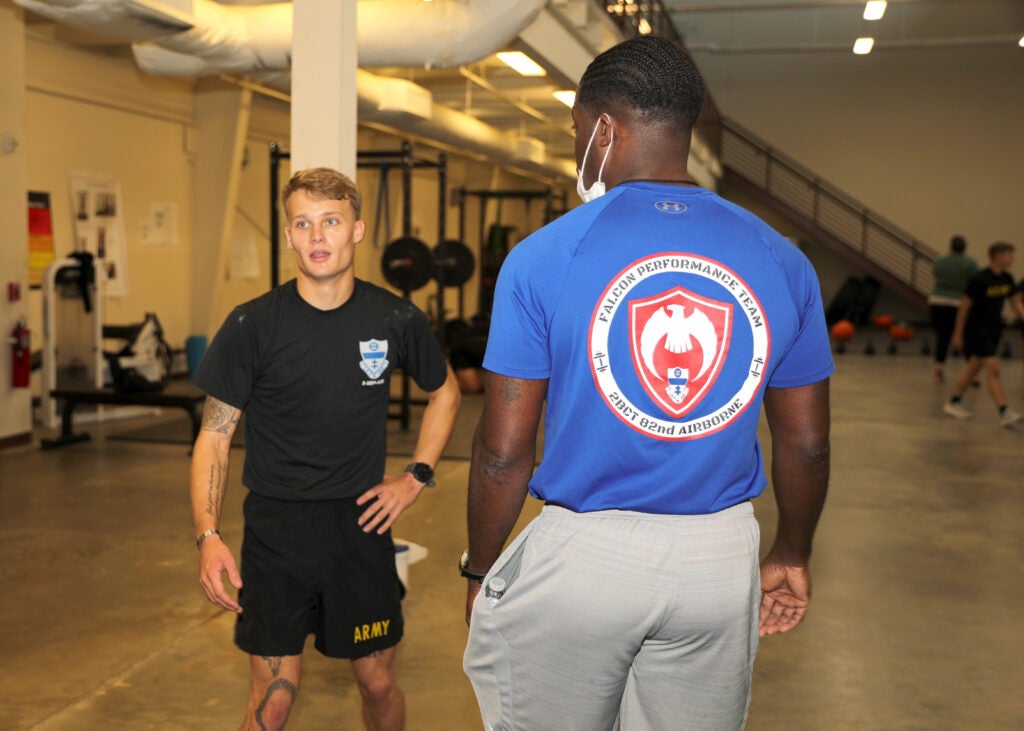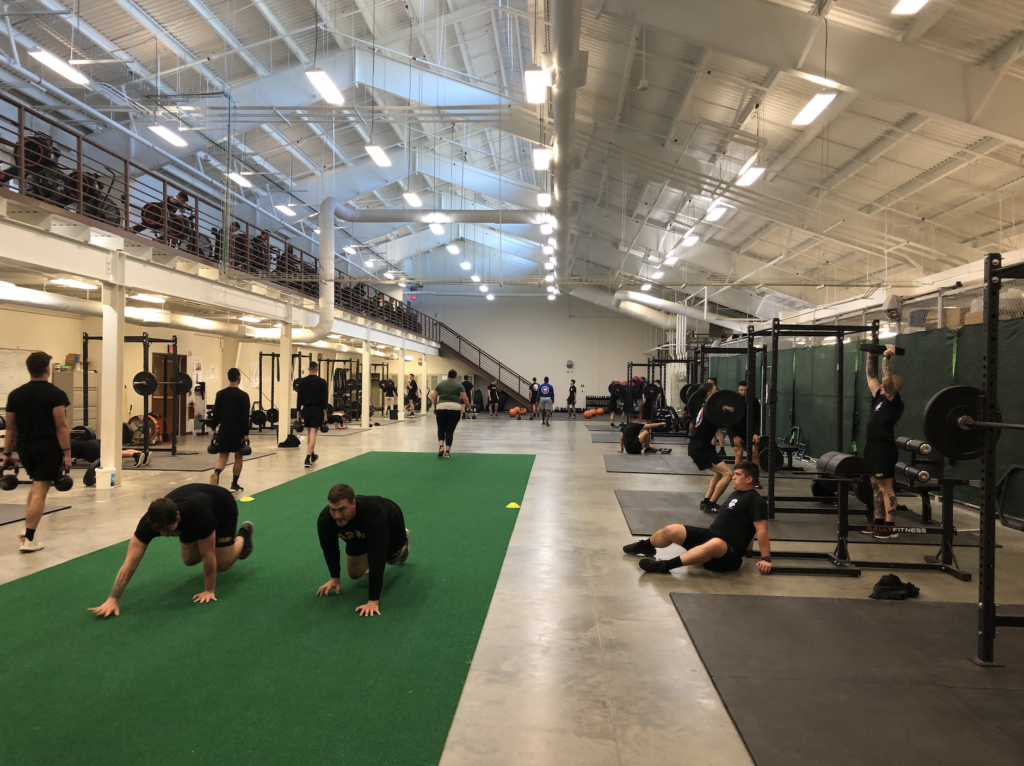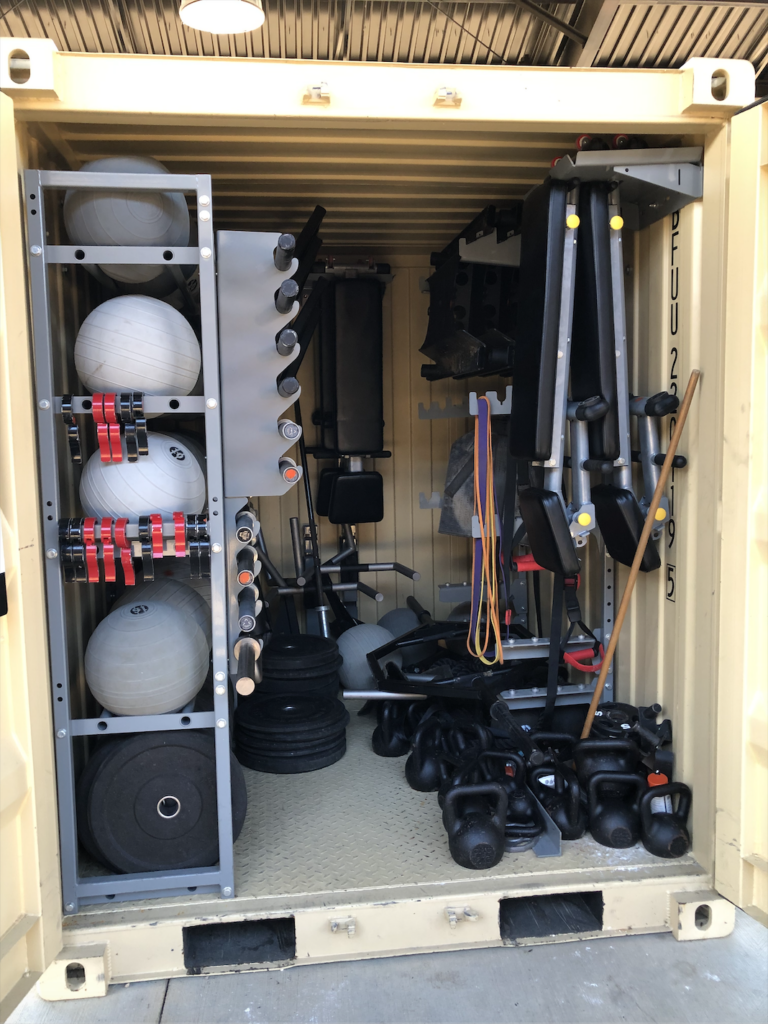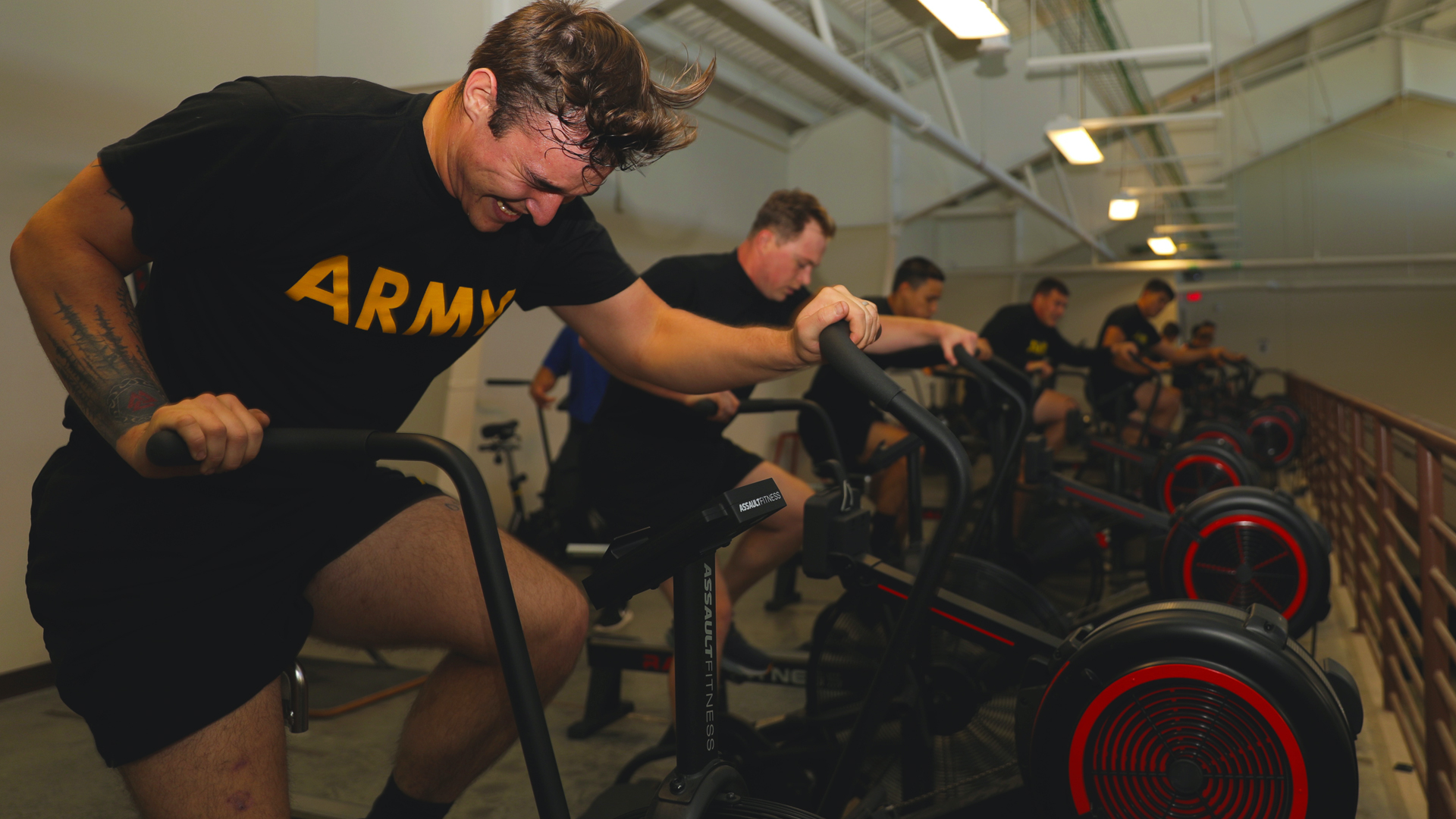It appears the era of “a couple of Motrin should do the trick” could be nearing its end in the Army.
“My sergeants major right now, they hurt. Their bodies hurt,” Col. Phillip Kiniery, the commander of the 2nd Brigade Combat Team, 82nd Airborne Division, told Task & Purpose last week. “I need to make sure that the next group of leaders and senior leaders in the Army don’t feel like I feel physically. That they’re healthy … I wish we thought this way when we were going up.”
The 4,500-soldier brigade is part of an effort to address injuries early and give soldiers more access to physical and occupational therapy through the Army’s holistic health and fitness program, which was announced in 2017 and officially put into Army policy last year. It focuses on total wellness, not just physical fitness, and urges mental and spiritual wellbeing, getting enough rest, eating well, and, more simply, just taking care of yourself.
Referred to internally as H2F, the holistic health and fitness program encourages soldiers to take better care of their minds and bodies, not simply push through the pain after an injury, and emphasizes learning how to physically train properly. And at least one brigade commander is hoping that with that kind of change, the next generation of Army leaders won’t have the same kinds of aches and pains as, you know, all of you do. But to do that will require a certain level of humility from leaders.

“That’s what I’m fighting every day: ‘We’re the 2nd Brigade, 82nd, we’re going to jump into combat anywhere in the world, we’re the 82nd Airborne Division,’” Kiniery said. “Like hey sergeant, I got it. You can kill anything, you can jump out of every aircraft, but just stop and listen to this strength coach because you’re doing it wrong.”
While the program could bring positive changes to soldiers everywhere, it will likely be years before it’s implemented Army-wide. There are currently 28 Army brigades — located at Fort Bragg, Fort Drum, Fort Polk, Fort Bliss, and Joint Base Lewis McChord — who have started implementing the holistic health and fitness program. In 2023, the Army will start pushing it out to 10 more brigades a year for the next 10 years.
Kiniery, whose brigade was one of the first Army units to start integrating trainers and health professionals, walked Task & Purpose through the brigade’s training center on Oct. 18. Inside the facility, soldiers can find the Sexual Harassment/Assault Response and Prevention (SHARP) office, the equal opportunity office, and the chaplain’s office, as well as a sports medicine clinic, nutritionists, and a gym. It serves as a place where “a paratrooper can come to one location … and ideally get any help” they need, he said.
At the brigade’s training center, a repurposed office building called the Falcon Holistic Health and Fitness Center, civilian strength coaches and trainers are easy to spot in blue Under Armour shirts. Kiniery suggested the uniform to give the feel of a professional athletic training program while making it clear who soldiers could ask for help. That idea of training soldier athletes is ubiquitous. If professional athletes do physical therapy and train with coaches, the thinking goes, then why can’t soldiers?
“I think part of this is, the athlete, the professional athlete, that’s where they see this thing as being cool,” Kiniery said of soldiers.

Jessica Johns, an Army veteran and the director of the brigade’s H2F program, noted that holistic health and fitness was still a relatively new concept and said she and her team were working to get commanders and units “to understand how we can be built into their training plans.”
The intent of the holistic health and fitness program is to stop seeing soldiers “as carbon copies of one another,” and instead “as individuals,” Maj. Gen. Lonnie Hibbard, the former commander of the Army Center for Initial Military Training, said last year. Army leaders envision a world in which soldiers have training programs tailored to their individual needs, instead of using a one-size-fits-all approach.
Ideally, soldiers will be doing physical training that will help them specifically excel and reach the next level of their training while also avoiding injuries and, if that injury isn’t avoided, quickly and efficiently rehabilitate them. The individualized training will take into account not only where they are physically, and how they can improve, but also mentally. Are the soldiers sleeping enough, to be able to recharge from the day before? Is there something bothering them, something that has become a sort of mental block in the way of their training, that they can discuss with the chaplain? Some units are even adopting yoga as a way to practice mindfulness and centering.
And then comes the nutritional aspect. It’s not just about eating right, though that’s a big part of it; nutritionists with the brigade also stay on top of training calendars so they can go out to the units and do hydration assessments of the soldiers to make sure they’re drinking enough water before something like a long ruck march, for example. It’s unclear what specifically the hydration assessment entails, but Johns emphasized that even the slightest dehydration can “decrease your performance tremendously.”
Unlike typical Army units, the 2nd Brigade has direct access to trainers and physical therapists, so soldiers don’t need to wait at a clinic or need referrals, Johns said. In fact, they have nearly 24-hour access to care. And that kind of access will help them train safely and effectively for the Army Combat Fitness Test, which is more physically demanding than the Army Physical Fitness Test that included push-ups, sit-ups, and a two-mile run.

Kiniery recalled going for runs with his father as a kid while he served at Fort Bragg. And when he was a company commander himself at Bragg, Kiniery said, “all we did [was] run.”
“That’s just not right,” he said. “It hurts.”
The Army has introduced new exercises with the Army Combat Fitness Test, which means the service has to work harder at preventing injuries, according to Kiniery, especially when younger soldiers are trying to lift heavier weights than they should, or lifting with improper form. The gym in the training facility, open 24 hours a day, is only available to soldiers in squads — they can’t use it alone — and requires them to have a strength coach with them to monitor their workouts, Kiniery said.
“That’s why they’re here, literally to coach,” Johns said. “To regress where needed, to scale where needed, and then also for those who are at a more elite level, try to take them to the next level.”
Johns said the coaches are there to help soldiers “lay those foundations” to excel in the ACFT and “build the aerobic foundation, and the strength, whereas those soldiers training for the [Army Physical Fitness Test] were just training for pushups and the run.” The coaches also hold classes specifically for pregnancy and postpartum training, which Johns said has thus far been “really successful.”
But the training extends outside of the brigade’s facility as well, where soldiers can find a number of big boxes full of gym equipment, similar to how ACFT equipment is stored. Kiniery said soldiers and their team can use the “gym-in-a-box” at any time.

While the holistic health and fitness approach is meant to better take care of soldiers, the Army isn’t just doing it out of the goodness of their hearts. The service has a vested interest in keeping soldiers in the best physical and mental shape as possible: a healthy and happy soldier is more likely to stay in the service.
Kiniery said he’s met “incredible” noncommissioned officers who have decided to leave the service because their bodies are worn out. They can’t “keep up with the guys” during runs, or “can’t jump out of an airplane” anymore, Kiniery said, adding that such problems reflect the way the Army has done things in the past, and they require changes going forward.
The only reason those soldiers are leaving is because “we just beat them down, we didn’t do it smart,” Kiniery said. “We grew up in an environment where we just made them put a 150-pound ruck on and walk all the time. … And it takes a generation of [noncommissioned officers] to transition through this, and everybody sort of moves forward. Then it will be the norm.”
More great stories on Task & Purpose
Want to write for Task & Purpose? Learn more here and be sure to check out more great stories on our homepage.






More Stories
The Power of Sleep and Monotasking: Unlocking Your Concentration Potential
Natural Looking Botox Injections for Anti-aging
Exploring the Different Types of Back Pain Treatments